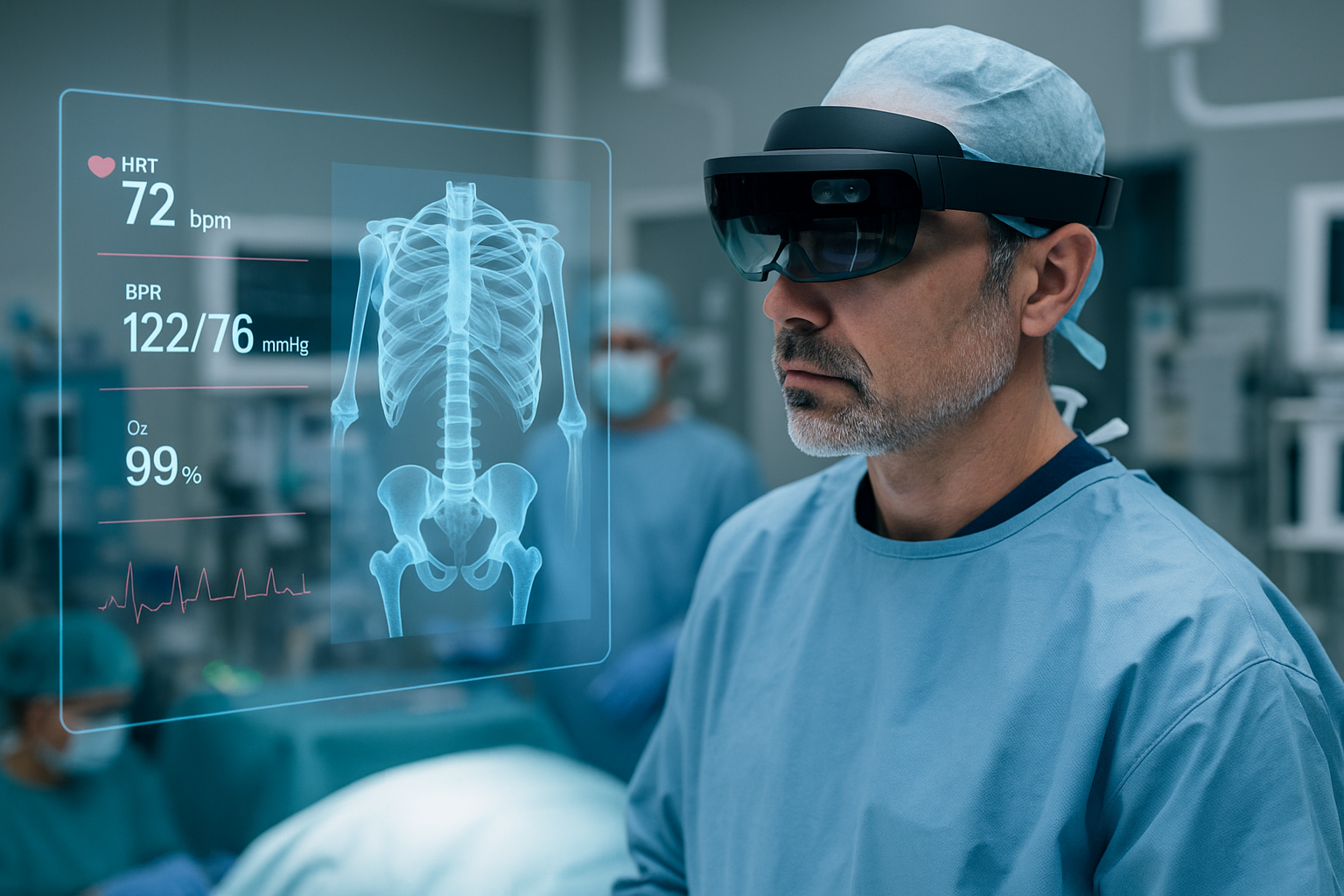AR in Sports Training: Immersive Coaching and Performance Optimization
What’s new in AR this month? In August 2025, Meta Quest introduced new three-dimensional motion capture features, making it possible for athletes to train with precise AR-enhanced simulations using lightweight hardware. Meanwhile, Adidas and the German Football Association announced a joint pilot program that integrates AR coaching overlays into youth soccer academies, while rehabilitation centers in the U.S. began deploying AR platforms for post-ACL injury recovery. Together, these innovations mark a decisive shift toward augmented reality as a mainstream tool in sports training and performance management.
Why AR in Sports Training Matters
AR in sports training is revolutionizing the athlete experience by providing real-time, immersive insights that bridge the gap between traditional coaching, biomechanics, and performance analytics. Instead of waiting for video reviews or delayed feedback, athletes can now see overlays of movement paths, swing trajectories, or positional markers in the moment of action. This instant corrective feedback accelerates skill acquisition, sharpens decision-making, and embeds improvements into muscle memory faster than ever before.
How AR Enhances Athlete Development
1. Real-Time Biomechanical Feedback
Using AR glasses or smart mirrors, athletes can see their form projected against optimal models. A weightlifter might watch an overlay showing the correct bar path during a clean and jerk, while a sprinter sees stride angles and hip rotation metrics displayed mid-run. This kind of live visual correction was once reserved for elite biomechanics labs—today, AR brings it directly to training grounds.
2. Tactical Decision-Making
In team sports, AR simulates game-like scenarios. Soccer players see passing lanes highlighted in real time, while basketball players experience defensive zone overlays during drills. By training cognitive and tactical awareness in immersive settings, athletes adapt more quickly under live conditions.
3. Rehabilitation and Injury Prevention
For athletes recovering from injuries, AR provides structured, guided rehabilitation. An AR system can project safe movement arcs for an athlete recovering from ACL surgery, ensuring precise form while reducing reinjury risk. Preventive AR tools also analyze patterns of movement to flag risky habits before injuries occur.
Case Studies Across Sports
- Soccer: FC Barcelona has tested AR glasses for youth academies to visualize spatial positioning during tactical drills, enhancing awareness of passing lanes and defensive shape.
- Basketball: NBA teams are experimenting with AR-assisted shooting drills, projecting optimal shot arcs into the air for players to align their release points.
- Golf: AR applications allow players to analyze swing paths, ball trajectories, and clubface angles directly on the green without waiting for simulator feedback.
- Tennis: Startups like Sense Arena are developing AR-based stroke training platforms, showing players live overlays of racket angle, impact zone, and follow-through path.
- Rehabilitation: U.S. Olympic training centers are trialing AR platforms for ACL recovery, where athletes perform guided squats and lunges with AR-corrected form visualization.
Educational Insights: AR vs. VR vs. Traditional Training
It’s important to distinguish AR from VR and standard video coaching:
- Traditional coaching: Relies heavily on delayed feedback through verbal correction or post-session video review.
- Virtual reality: Creates immersive simulations but isolates athletes from the real environment—useful for tactical rehearsal, less so for live biomechanics.
- Augmented reality: Enhances the real-world environment with overlays, allowing immediate, contextual feedback without breaking training flow.
For this reason, AR is increasingly seen as the most practical immersive tool for live sports performance and coaching.
Market Trends and Growth Data
- The global AR sports technology market is projected to grow from $3.8 billion in 2025 to $15.2 billion by 2030.
- Over 60% of elite training facilities in Europe now use some form of AR analytics for at least one sport.
- Rehabilitation-focused AR solutions are forecasted to reduce recovery times for common sports injuries by up to 20% within the next five years.
Performance Benefits Supported by Data
- Skill accuracy: Studies show a 28% improvement in technical execution when athletes receive AR-based feedback during drills.
- Rehab compliance: Engagement levels rise by 40% when athletes use AR-guided rehabilitation exercises compared to written or video-only instructions.
- Tactical awareness: Cognitive decision-making improves by 19% in team sports when AR simulations are used alongside physical drills.
Challenges to Adoption
- Cost of hardware: While smartphone-based AR apps are accessible, high-precision AR glasses remain costly for grassroots organizations.
- Data overload: Too much overlay can overwhelm athletes. Minimalist, focused AR cues are essential to maintain clarity.
- Standardization: AR platforms currently vary in accuracy and compatibility across sports—standards are still emerging.
- Coach adoption: Educators and coaches need training to integrate AR effectively into established methodologies.
Best Practices for AR Integration
- Start small: Begin with targeted drills or rehabilitation modules before scaling to full training programs.
- Prioritize usability: Select AR tools with intuitive interfaces that don’t distract from athlete focus.
- Blend coaching styles: Combine traditional instruction with AR-enhanced corrections for balanced training.
- Measure impact: Track performance metrics pre- and post-AR adoption to evaluate effectiveness.
Looking Ahead: AR Sports Training 2025–2030
The next five years will see AR in sports move from pilot projects to mainstream adoption across multiple disciplines. Expect to see:
- AI-driven AR coaching: Systems that predict athlete fatigue, suggest corrective cues, and auto-adapt overlays to performance in real time.
- Wearable integration: Smart shoes, sleeves, and sensors linked directly with AR overlays to provide holistic biomechanical analysis.
- Team-wide AR environments: Multi-user AR platforms allowing entire squads to visualize tactical drills simultaneously.
- Consumer-grade adoption: Amateur athletes and fitness enthusiasts using AR via smartphones and glasses for training, guided workouts, and gamified fitness.
Key Takeaways
- AR in sports training is no longer experimental—it’s a proven tool for coaching, performance, and rehabilitation.
- Immediate feedback accelerates learning, builds confidence, and reduces injury risks.
- Adoption is set to expand rapidly, supported by AI integration, wearable tech, and lower-cost AR devices.
- By 2030, AR will likely be as common in training centers as video analysis is today.




